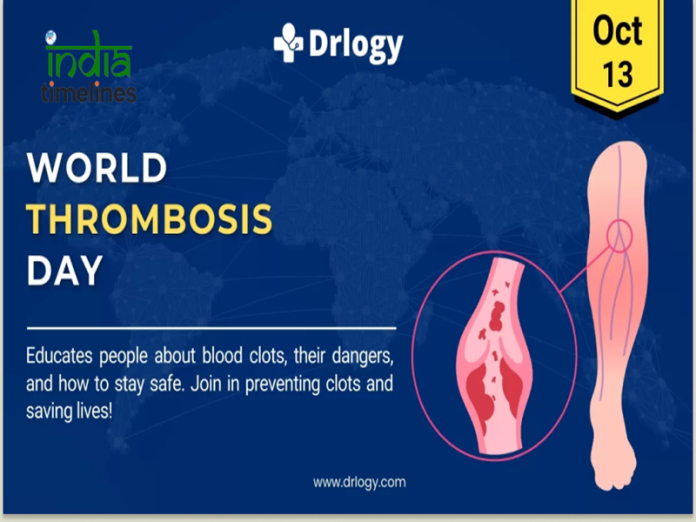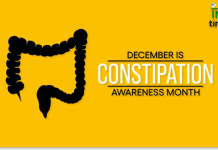
World Thrombosis Day, observed annually on October 13th, is a global campaign aimed at raising awareness about thrombosis, a condition that involves the formation of blood clots in blood vessels. These clots can lead to serious and sometimes fatal conditions, such as deep vein thrombosis (DVT), pulmonary embolism (PE), heart attacks, and strokes. Spearheaded by the International Society on Thrombosis and Haemostasis (ISTH), World Thrombosis Day is dedicated to educating the public, healthcare professionals, and policymakers about the causes, prevention, and treatment of thrombosis.
In 2024, the theme of World Thrombosis Day is more crucial than ever, as it reflects the ongoing need for global education and timely intervention. This year’s focus shines a light on early detection and preventive strategies in an effort to reduce preventable deaths and long-term health consequences caused by thrombotic events.
Understanding Thrombosis
Thrombosis occurs when a blood clot forms within a blood vessel, obstructing the flow of blood through the circulatory system. There are two primary types of thrombosis:
- Venous Thrombosis – This involves clots that form in veins, which are the blood vessels responsible for returning blood to the heart. Common types of venous thrombosis include deep vein thrombosis (DVT), where a clot forms in a deep vein, typically in the legs, and pulmonary embolism (PE), where a clot travels to the lungs.
- Arterial Thrombosis – In this case, clots form in arteries, which carry oxygenated blood from the heart to the body. Arterial clots can lead to life-threatening conditions like heart attacks and strokes.
Why is it important to raise awareness about thrombosis?
Thrombosis is one of the leading causes of death and disability worldwide. However, it is often underdiagnosed, undertreated, and under-recognized. According to the World Thrombosis Day initiative, 1 in 4 people worldwide die from conditions related to thrombosis. The lack of public knowledge and awareness can delay proper medical intervention, making early detection and education key in saving lives.
Signs and Symptoms of Thrombosis
Early identification of thrombosis can prevent severe complications. Symptoms can vary depending on whether the clot is located in a vein or an artery.
Deep Vein Thrombosis (DVT) Symptoms:
- Swelling in one leg (or arm), often in the calf
- Pain or tenderness, typically in the leg
- Skin discoloration (redness or warmth)
- Unexplained pain that worsens over time
Pulmonary Embolism (PE) Symptoms:
- Sudden shortness of breath
- Chest pain, especially when breathing in
- Rapid heartbeat or irregular heart rhythms
- Lightheadedness or fainting
- Coughing up blood
Arterial Thrombosis Symptoms:
- Sudden chest pain or discomfort, indicative of a heart attack
- Sudden numbness, weakness, or paralysis, especially on one side of the body, which can be a sign of a stroke
- Sudden confusion, difficulty speaking, or loss of vision
If any of these symptoms are present, immediate medical attention is essential.
Risk Factors for Thrombosis
Several factors can increase the risk of developing thrombosis. Being aware of these risk factors can empower individuals to take preventive actions:
- Immobility or Inactivity: Long periods of sitting or lying down, such as during long flights, hospital stays, or recovery from surgery, can slow down blood flow and lead to clot formation.
- Age: The risk of thrombosis increases with age, particularly for individuals over 60.
- Pregnancy and Hormonal Birth Control: Pregnant women and those using birth control pills or hormone replacement therapy are at higher risk due to changes in blood composition and flow.
- Chronic Diseases: Conditions like cancer, heart disease, diabetes, inflammatory diseases, and obesity are linked to an increased risk of thrombosis.
- Surgery and Trauma: Major surgery, particularly orthopedic surgery, and physical trauma can increase the risk of clot formation.
- Genetic Predisposition: Certain inherited conditions, such as Factor V Leiden, increase an individual’s risk of developing abnormal blood clots.
In addition to these, lifestyle factors such as smoking, a sedentary lifestyle, and unhealthy diets can also contribute to thrombosis risk.
Preventing Thrombosis: Simple Steps to Stay Safe
While some risk factors for thrombosis, such as age and genetics, are beyond control, many preventive measures can significantly reduce the likelihood of clot formation. These include:
- Stay Active: Regular physical activity is essential for maintaining proper blood flow. For individuals who have jobs that require long periods of sitting, it’s important to take frequent breaks, stretch, and walk.
- Hydration: Staying hydrated is crucial, especially during long flights or periods of immobility. Dehydration can thicken the blood, increasing the likelihood of clot formation.
- Compression Stockings: For people at high risk of DVT, wearing compression stockings can help improve circulation in the legs.
- Medical Guidance: People with chronic conditions or a family history of thrombosis should discuss their risk with a healthcare provider. For those at high risk, anticoagulant medications may be prescribed as a preventive measure.
- Healthy Diet and Weight Management: Maintaining a healthy weight and a balanced diet can improve circulation and reduce the risk of cardiovascular disease, a major contributor to thrombosis.
The Importance of World Thrombosis Day
World Thrombosis Day serves a dual purpose. First, it spreads awareness of the condition and its potentially life-threatening complications. Second, it highlights the steps that can be taken to prevent thrombosis and promotes early detection.
For healthcare providers, World Thrombosis Day emphasizes the importance of screening and risk assessment for patients, particularly those at higher risk due to surgery, cancer treatment, or immobility. The medical community plays a crucial role in ensuring that patients receive adequate information about thrombosis and preventive care.
For the general public, the day serves as a reminder that thrombosis is largely preventable. Simple actions, such as staying active, monitoring for signs and symptoms, and maintaining a healthy lifestyle, can reduce the risk of blood clots.
Thrombosis in a Post-COVID-19 World
The COVID-19 pandemic brought thrombosis into the spotlight, as blood clots were found to be a significant complication for many COVID-19 patients. The infection, especially in severe cases, can trigger a hyperactive immune response that leads to blood clot formation. This connection between COVID-19 and thrombosis further underscores the importance of global awareness efforts, as the long-term effects of COVID-19 on clotting disorders are still being studied.
Key Messages for World Thrombosis Day 2024
- Early Detection Saves Lives: Timely recognition of symptoms like unexplained leg pain, swelling, or sudden shortness of breath can prevent fatal complications.
- Know Your Risk: Individuals with a higher risk of thrombosis—whether due to age, immobility, or medical conditions—should take proactive steps to mitigate their risk.
- Spread Awareness: By educating others about thrombosis, we can collectively contribute to reducing the global burden of this condition.
- Thrombosis is Preventable: Many cases of thrombosis can be avoided through lifestyle changes, medical intervention, and public awareness.
- COVID-19 and Thrombosis: For those recovering from COVID-19 or experiencing long-term symptoms, it is crucial to be aware of the increased risk of blood clots.
India Time Lines
Conclusion
As we mark World Thrombosis Day 2024, the global health community continues to push for greater awareness and prevention of thrombosis. With 1 in 4 deaths worldwide related to blood clots, the importance of early detection, risk factor management, and public education cannot be overstated. By recognizing the signs and taking preventive measures, individuals and healthcare providers can make significant strides in reducing the impact of thrombosis on public health.
Together, let’s make World Thrombosis Day 2024 a turning point in the global fight against blood clots—one step closer to saving lives and ensuring a healthier future for all.




































toobit exchange